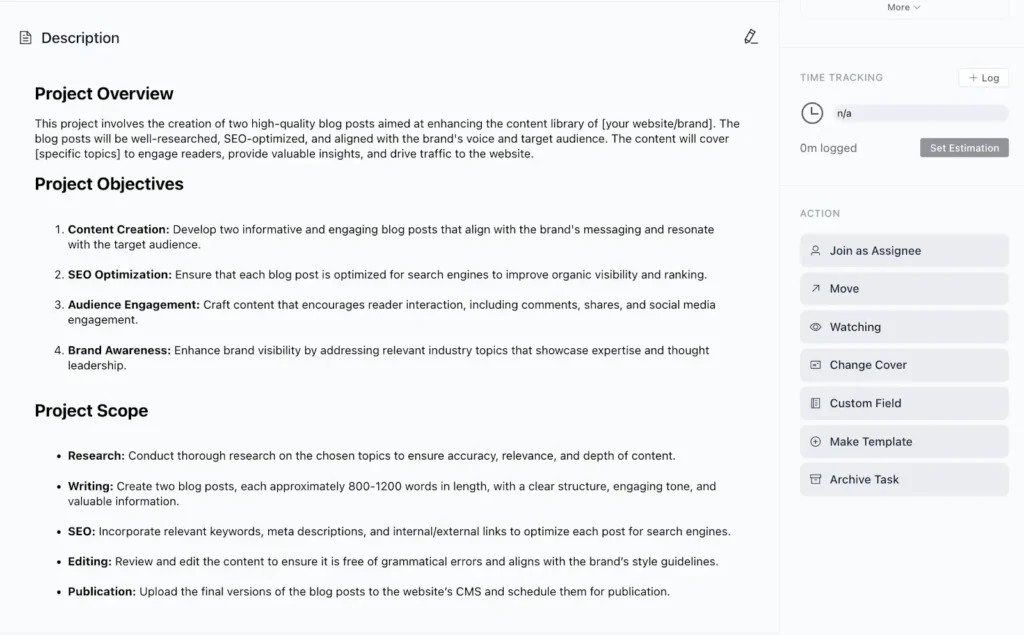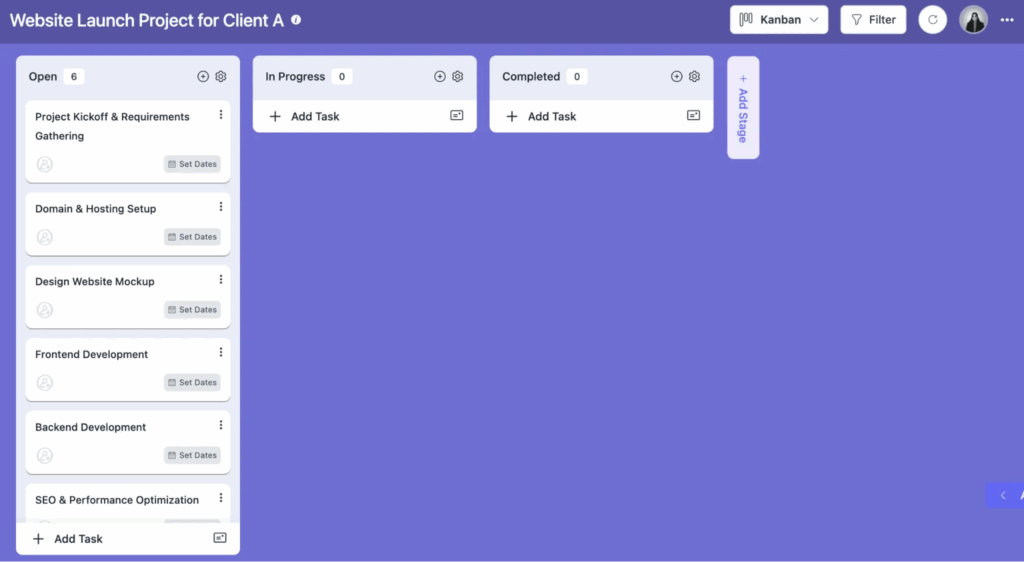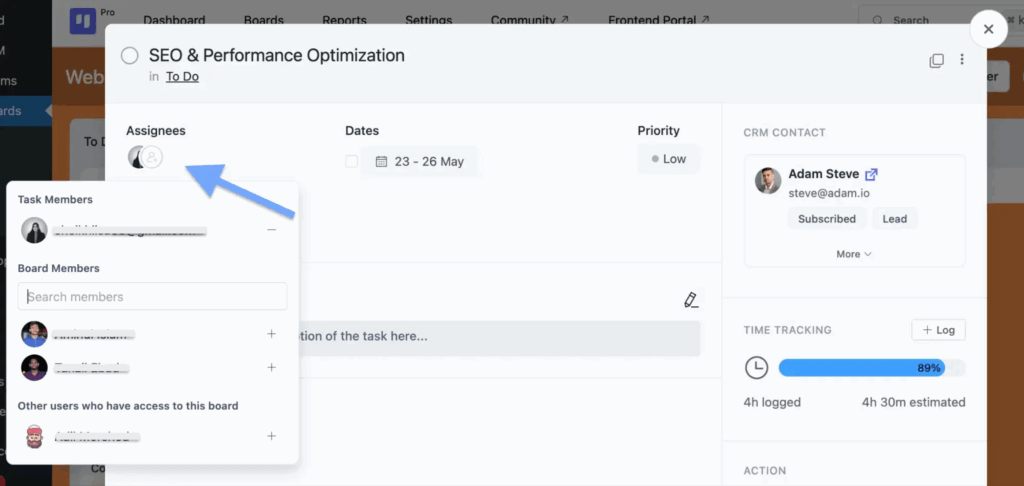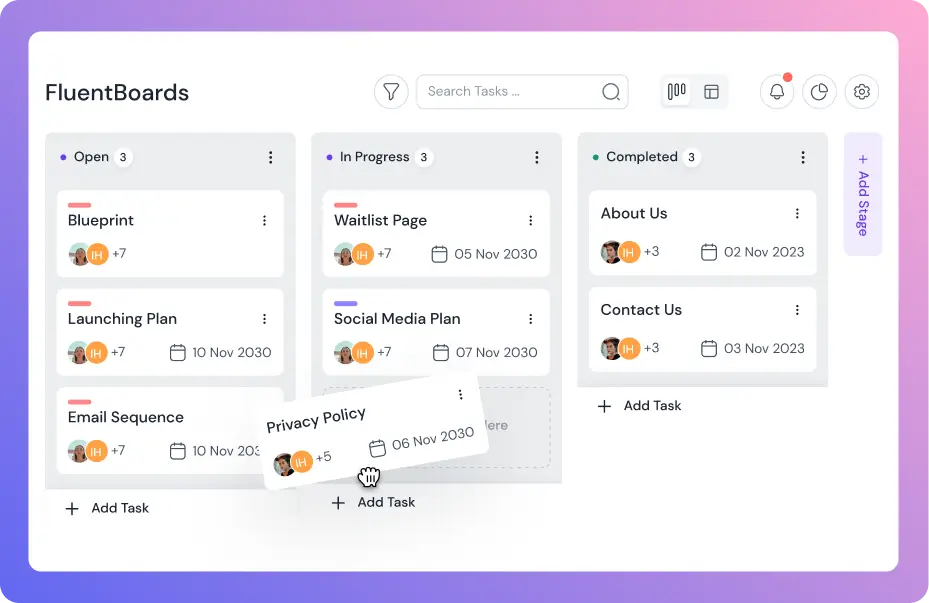
Scope Creep: The Silent Project Killer and How to Prevent It
You know the constant battle between staying on scope and drowning in client requests that always seem “totally reasonable.”
Maybe it was a client who kept changing their mind, or a stakeholder who thought everything was “just a quick add.” Before long, you’re stuck in a scope creep disaster that comes back to bite.
The real challenge is learning how to push back or course-correct without burning bridges.
In this guide, we explore scope creep from its causes to prevention and show how you can keep your project on track, protect your team, and manage client expectations.
So, take your strategic lens cap and let’s dive in.
What is Scope Creep?
In project management, scope is what the project is meant to do and deliver. And, when extra tasks are added outside the scope and without approval, it’s called scope creep, also known as requirement creep, feature creep, or the kitchen sink syndrome.
52% of projects are experiencing scope creep, according to PMI research, which leads to average cost overruns of 27% above the original budget
It starts small when stakeholders request ‘just one more thing’ without approval or adjusting timelines and resources. At first, it feels manageable, but soon your project is:
- Missing deadlines
- Exceeding budgets
- Straining teams and resources
Without proper control, it disrupts team collaboration, diverts attention from core objectives, and ultimately stands in the way of successful project completion.
What Are the Main Causes of Scope Creep?
Well, let’s be honest, scope creep doesn’t just appear out of nowhere, and here are some underlying reasons that cause scope creep –
1. No clear project scope defined upfront
When the scope isn’t defined from the start, organized management becomes impossible!
Project scope sets boundaries, defines deliverables, and keeps stakeholders aligned on what’s included and excluded. But when it isn’t defined upfront, chaos is inevitable!
Project managers struggle to make informed decisions, clients throw in brand-new demands every day, and as a result, the whole project team is left wandering without proper direction.
And where does all this chaos lead?
Yes, you guessed it. It leaves the door wide open for scope creep!
Want to dive deeper? Check out our detailed blog on project scope
2. Unclear or unrealistic project objectives
If you haven’t established clear, measurable goals and objectives for your project, how will you:
- Identify the right tasks to focus on
- Allocate resources effectively
- Determine when the project is truly complete
And this often leads to teams working on tasks that don’t drive the project forward. As a result, everything starts to feel urgent, and the scope can quickly spiral out of control.
This lack of clarity makes it difficult for teams to understand what success looks like, increasing the risk of delays, wasted effort, and budget overruns.
3. Poor communication between stakeholders
Poor communication is often rooted in a lack of clarity. If your project scope and objectives haven’t been clearly communicated, it results in confusion and misaligned expectations among team members and stakeholders.
Here’s where things go sideways: stakeholders start filling in the blanks themselves, making assumptions about what’s included in the project.
Before you know it, you’re stuck playing referee between conflicting demands instead of actually moving the project forward.
For a deeper understanding, read our detailed guides on Project Stakeholders
4. No resource allocation plan
When resources aren’t allocated properly, the project takes the biggest hit. Teams get overworked, tasks fall behind, and priorities clash.
Without a clear plan, work can be assigned outside the project scope or unrelated to project goals, leading to:
- Off-scope tasks
- Wrong priorities
- Resource conflicts
This honestly ends up making project managers scramble, teams struggle with conflicting tasks, and resources get exhausted, while the project scope expands based on availability rather than actual needs.
5. Ineffective change control process
Change on projects is inevitable, and with each change comes the increased risk of scope creep impacting your project plan, timelines, and resources.
In fact, about 49% of completed projects experience uncontrolled changes to their scope, according to a PMI report.
Without clear procedures to document, review, and approve modifications, small tweaks quickly pile up, pushing project scope beyond manageable limits.
On top of that, when project managers lack proper software or KPI tracking, changes go unnoticed, resources drift, and scope creep spreads before it can be controlled.

Level up your WordPress project management game with this Trello equivalent solution – where limitless possibilities come at an unbeatable price!
6. Unrealistic project scheduling
Unrealistic project schedules can derail even the best-planned projects when promised deadlines clash with reality, creating unachievable expectations.
When schedules ignore task complexity or team capacity, stakeholders therefore push for shortcuts or extra resources, leaving project managers caught between ambitious goals and practical limits.
And what’s actually the bigger risk?
Teams may cut corners, skip reviews, or accept “quick fixes” that add unapproved work, while stakeholders demand more features because, “Since we’re behind, let’s add this too.”
All of this fuels scope creep as projects rush to meet deadlines.
7. Last-minute client feedback and requests
Client feedback is valuable, but when it arrives late in the project, it often triggers major changes to work that’s already been completed.
This usually happens because clients aren’t involved early in planning or feedback isn’t collected on time, so by the time input comes in, teams often have to redo significant portions of the project, expanding the scope far beyond the original plan.
These late requests dump extra work, stress, and overtime on your team as they scramble to fix changes that should have been caught way earlier.
Examples of Scope Creep In a Project
Here’s how scope creep shows up in real projects across departments:
Software development overload
You’ve set clear project milestones in your original 2-month e-commerce project plan with defined objectives: product catalog, checkout system, and user accounts. Midway, stakeholders ask for a buyer’s purchase history feature.
Impact:
- Milestones slip as developers adjust to new work
- Core functionality gets less attention, affecting UX
- Timeline stretches from 2 to 4 months
- Costs rise due to extra resources and budget adjustments
Marketing campaign expansion
The marketing team had planned email campaigns and social posts for the original launch. With the new purchase history feature, they now need campaign content to explain it.
Impact:
- Deadlines shift, messaging gets diluted
- Other marketing tasks fall behind
- ROI drops as resources stretch
- Additional time and budget required for new campaign assets

Step into the Future of Project Management!
Website/UX redesign spiral
Your product team now needs to integrate purchase history into dashboards, requiring additional design work you hadn’t planned for.
Impact:
- UX milestones pushed back
- Testing cycles increase
- User experience may suffer
- Extra resources and time impact the project budget
Operations/Support strain
Your support team now has to handle questions about purchase history and train staff on new dashboards without additional time allocated.
Impact:
- Support deadlines missed
- Response times drop
- Stress and workload increase
- Additional operational effort increases costs
Each scenario shows the same pattern: small requests that seem reasonable individually but collectively derail the entire project, leaving everyone frustrated and over budget.
How to Prevent Scope Creep
Here’s how to build your defenses and win the war against scope creep-
Document project requirements
Want to know the fastest way to invite scope creep into your project? Skip documenting requirements. Most scope creep comes from not writing down what stakeholders actually want upfront.

Start by talking to all stakeholders to understand their exact needs –
- What specific features and functions stakeholders expect
- How the final deliverable should accomplish business goals
- Success criteria from each stakeholder’s perspective
- Constraints or limitations that might impact delivery
Once everything is written down, fix disagreements and set priorities. Then share the final document so everyone uses it for scope decisions.
Establish a clear project scope
You can have perfect requirements documented, but without clear boundaries of what’s included and excluded, your project becomes a free-for-all where anything goes.
That’s why, create a project scope statement that includes:
- Project objectives
- Project deliverables
- Deadlines
- Constraints
- Assumptions and exclusions
Then establish your scope baseline by creating a Work Breakdown Structure (WBS) to visualize deliverables and break them into tasks and subtasks.

The more detailed your scope, the harder it is for stakeholders to claim additional work was “obviously included.”
Next, set your schedule, scope, and cost baselines to track actual progress against planned work. With these boundaries in place and stakeholder agreement locked in, requests are easier to manage, and scope creep doesn’t stand a chance.
Make a scope management plan
A scope management plan is your project’s rulebook for staying on track. It explains exactly how your project’s scope will be defined, monitored, and controlled from start to finish.
As part of your overall project plan, it covers your WBS, scope statement, and how changes will be approved.
It sets clear boundaries for stakeholders and gives you a simple way to assess new requests so that you can see their impact on timelines, resources, and deliverables without last-minute chaos.
Get stakeholders on the same page
Now, make sure all stakeholders are on the same page with the defined scope. Walk through the scope statement, deliverables, timelines, and what’s excluded so everyone clearly understands and agrees.
Use project management tools to track approvals and any changes, which keeps everything transparent and accountable.

FluentRoadmap Comes Free with FluentBoards Pro!
When everyone is aligned from the start, it’s much easier to manage expectations and set your team up for a smooth project without surprises.
Set up a change management plan
Uncontrolled changes are a fast track to scope creep. The reality is, even with a solid requirements document, changes will happen, so it’s crucial to manage them.
A change plan lays out how requests should be submitted, reviewed, and approved. It also tracks impacts on timelines, budgets, and resources.
Here’s how to stay in control:
- Require written change requests for any modifications
- Assign decision-makers to review and approve changes
- Document how each change affects the project
- Keep a change log to track all updates
With this process, stakeholders think twice before requesting tweaks, and your team stays focused on what really matters.
Create a realistic project schedule
Creating a clear project schedule means turning your project plan into a roadmap that everyone can follow.
Start by listing all tasks and deliverables, then assign responsibilities and allocate resources based on team members’ skills and availability so everyone knows exactly what they are accountable for.

Set realistic timelines for each task and milestone, and include some contingency for unexpected delays. Make sure dependencies between tasks are clear so work flows smoothly.

If changes occur, handle them through your change management plan so responsibilities stay clear, resources are allocated effectively, scope creep is avoided, and your schedule stays on track from planning to delivery.
How to Manage Scope Creep When It Happens
Already dealing with scope creep?
Let’s take control and get your project back on track:
- Document and alert by writing down what changed and telling stakeholders how it affects your budget and timeline
- Measure the damage by comparing your current work to the original plan to see how far off track you are
- Show the cost by calculating what the changes will actually cost in time, money, and resources
- Use your process by making all new requests go through your change control system instead of accepting them informally
- Monitor status and scope by tracking project progress and deliverables against the original baseline plan
- Use recovery techniques by implementing fast tracking or crashing schedules to make up lost time with additional resources
- Say no when needed by questioning every new request and being ready to reject changes that don’t help the project goals
- Re-baseline if necessary by updating your scope statement, WBS, and cost baseline when changes are approved and communicating updates to stakeholders
Your Next Steps
Scope creep doesn’t have to kill your projects. With the right approach, you can deliver projects on time, on budget, and with happy stakeholders.
As Jeff Patton wisely said, “Scope doesn’t creep; understanding grows.”
The key is managing that growth properly and practicing “Let me check the impact” instead of automatically saying yes.
Remember, scope creep can come from anywhere. Sometimes it’s your favorite colleague who brings donuts and asks for “just one tiny thing.”
But your job as a project manager is delivering successful projects by protecting them from well-meaning changes.
Thanks for reading! Now go define your scope for your next project and stop scope creep before it starts. You’ve got this!
Let’s redefine project management with FluentBoards!
Get Tips, Tricks, & Updates
We won’t send you spam.









![how to create a project management workflow [x steps] (2)](https://fluentboards.com/wp-content/uploads/2025/11/How-to-create-a-project-management-workflow-x-steps-2-768x402.webp)





Leave a Reply